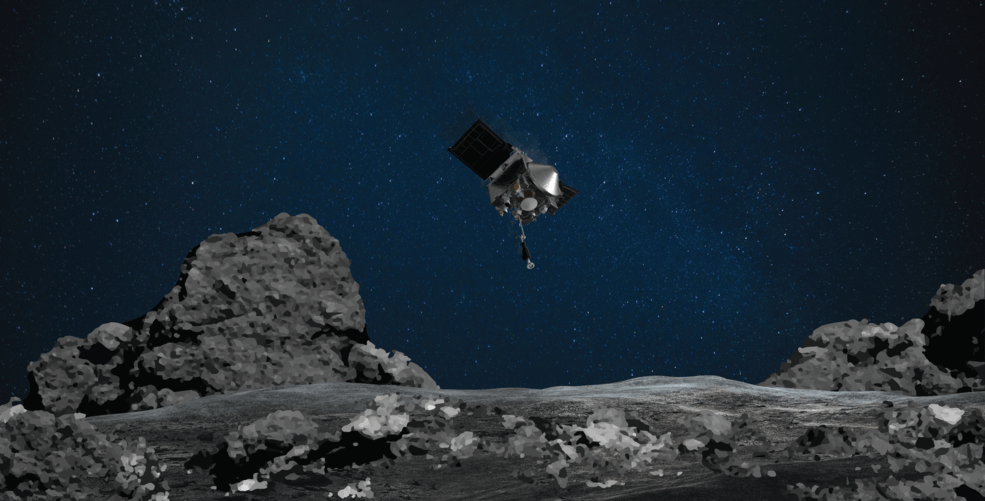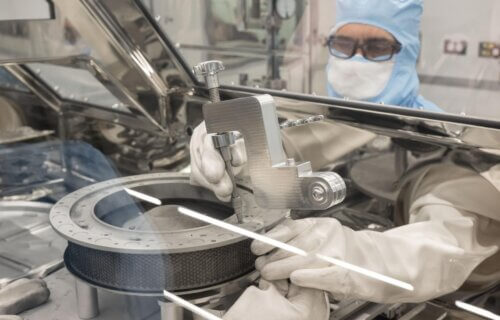HOUSTON — If you’ve ever struggled with a jar that you just couldn’t open in your kitchen, this story is for you. NASA has finally opened a particularly stuck lid on a container — after 16 weeks! The container has been holding space rocks and dust collected from the asteroid Bennu, which scientists believe will be invaluable to space research. Unfortunately, no one here on Earth could get the lid open since the historic probe returned from space on Sept. 24, 2023 — nearly four months ago!
The team involved in the OSIRIS-REx mission has successfully removed two fasteners that were hindering access to Bennu’s sample material. This accomplishment is a crucial step in the disassembly of the Touch-and-Go Sample Acquisition Mechanism (TAGSAM) head, enabling scientists to fully examine the rocks and dust brought back from the asteroid.
The OSIRIS-REx mission, launched in 2016, spent seven years traveling to Bennu and studying the asteroid before collecting these samples. The materials returned to Earth on Sept. 24 are believed to contain remnants from the solar system’s formation, about 4.5 billion years ago.
“Finally having the TAGSAM head open and full access to the returned Bennu samples is a monumental achievement that reflects the unwavering dedication and ingenuity of our team,” says the mission’s principal investigator, Dante Lauretta, Regents Professor at the University of Arizona Lunar and Planetary Laboratory, in a media release. “This success reaffirms the significance of OSIRIS-REx and our commitment to advancing our understanding of the cosmos. We eagerly anticipate the next chapter as we share these precious samples with the global scientific community and continue our journey of discovery.”

The next steps involve a few additional disassembly processes, after which image specialists will capture ultra-high-resolution pictures of the sample. The portion of the sample visible will then be removed, weighed, and its total mass determined.
“Our engineers and scientists have worked tirelessly behind the scenes for months to not only process the more than 70 grams of material we were able to access previously, but also design, develop and test new tools that allowed us to move past this hurdle,” notes Eileen Stansbery, division chief for Astromaterials Research and Exploration Science at NASA’s Johnson Space Center. “The innovation and dedication of this team has been remarkable. We are all excited to see the remaining treasure OSIRIS-REx holds.”
The disassembly process of the TAGSAM head hit a brick wall in mid-October when NASA couldn’t remove those final two fasteners. Scientists had to create two new multi-part tools just to finish the job. These tools are made from a specific grade of surgical, non-magnetic stainless steel, the hardest metal allowed in the sterile curation gloveboxes.
“In addition to the design challenge of being limited to curation-approved materials to protect the scientific value of the asteroid sample, these new tools also needed to function within the tightly confined space of the glovebox, limiting their height, weight and potential arc movement,” explains Nicole Lunning, OSIRIS-REx curator at Johnson. “The curation team showed impressive resilience and did incredible work to get these stubborn fasteners off the TAGSAM head so we can continue disassembly. We are overjoyed with the success.”
Despite the four-month delay in cracking open this potentially priceless space container, the team has already collected 70.3 grams of asteroid material, exceeding NASA’s goal of 60 grams. Some of this sample has been sealed for long-term preservation, with parts stored at room temperature and others at -112 degrees Fahrenheit.
Scientists at the University of Arizona’s Kuiper-Arizona Laboratory for Astromaterials Analysis have begun examining some of the pristine extraterrestrial material. Additionally, later this spring, a catalog of the OSIRIS-REx samples will be released to the global scientific community, marking another exciting phase in this groundbreaking mission.
You might also be interested in:
- Space rocks and asteroid dust are pricey, but one substance is worth ‘a billion billion dollars’
- This Near-Earth Asteroid Is Actually A Chunk Of Our Moon!
- Stargazers spot tiny asteroid lighting up the sky over Europe
